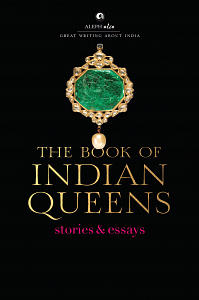Eminent noblemen had been drifting into the court of the Delhi Sultanate since the time of Iltutmish, fleeing the Mongols and other raiders or seeking advancement and opportunities. The Khwarazmian empire had been decimated after a Mongol caravan sent on a friendly mission was slaughtered by the Khwarazmians.
Enraged, Genghis Khan himself led his armies to war and directed the destruction of the fabled cities of Samarkhand and Bukhara. When Sultan Jalal al-Din Khwarazm Shah sought sanctuary at Iltutmish’s court, the Sultan refused probably wisely deciding against drawing the attention of Genghis Khan. Iltutmish also preferred to promote the ‘socially dead’, who would remain dependent on his patronage and were unlikely to create alternative power bases. Raziya, on the other hand, could not count on the unquestioned loyalty of the Shamsi ghulams or the free amirs. She had to maintain a delicate balance between different factions at court and in the provinces. In transferring the ghulams and amirs, she was making sure, like her father before her, that the men did not form powerful local ties within their domains.
Juzjani tells us that once these rebellions were quelled, ‘the kingdom became pacified and the power of the state widely extended…all the Maliks and Amirs manifested their obedience and submission.’ Even Isami, the fourteenth century historian writing a hundred years later about Raziya’s reign, said that ‘[the] renowned woman threw herself into the tasks of administration and men of experience firmly resolved to serve her.’ ‘She ruled
as an absolute monarch for four years,’ added Ibn Battuta. ‘She mounted horse like men armed with bow and quiver; and she would not cover her face.’
Raziya could now redirect her energy to ruling her kingdom and holding court at the kusk-i-firuzi at Mehrauli. The court was a public assembly and Raziya would have sat on a throne, a large, high-backed chair with a red canopy above it, flanked by a bodyguard of slaves armed with swords. In her court, there would have been Tajik bureaucrats, Persian adventurers and noblemen, holy men, scholars and Indian Muslims and other assorted Turkish and non-Turkish tribesmen. From the chronicles of the Ghaznavid Bayhaqi we can guess at what the slave guards, Central Asian men with high cheekbones and long black hair coiled in braids, would have been wearing: ‘rich robes, bejeweled belts and sashes, and weapons decorated with gold and silver.’ They would have been carrying maces, their traditional weapon, as well as various other items suspended from their belts, including a wallet, in the Central Asian fashion.
Isami has noted that Raziya’s throne was initially separated from the courtiers and the public by a screen and that there were female guards standing next to her, as she was nominally still in purdah at the beginning of her reign. Later on, she would have sat in full view of the court, listening to her supplicants’ entreaties and dispensing quick justice. In the evenings she would have attended the durbar where she would have witnessed a great alchemy of musical genres—Indian, Persian, classical and folk. There would have been scholars, artisans and performing artistes from the major centres of Islamic culture. Slaves would have walked around offering betel leaves to those present and the evenings would have culminated in banquets of chicken, goat, rice, roast beef and breads.
The kingdom Raziya inherited from her father stretched from Delhi in the west to Lakhnauti in Bengal to the east. Under Raziya’s reign, the autonomy of some of the eastern territories was virtually conceded to the powerful muqta of Lakhnauti, Toghan Khan. In dealing with independent powers, she was pragmatic. The fortress of Ranthambore had been under siege by the Chauhans for some time when Raziya came to power. She sent a force under Qutb al-Din Hasan to evacuate the Muslim garrison posted there and to destroy all the fortifications the Muslims had built.
Similarly, in Gwalior, Sanajr-i-Qabaqulaq secured the Muslim population and brought them back to Delhi. Both Ranthambore and Gwalior passed back into the hands of Hindu kings—a reality the older Shamshis, for whom these had been major conquests, would have bitterly resented.
Iltutmish had also had a new system of coinage launched, based on the pure silver tanga which would eventually replace the dihliwals minted by the Hindu rulers of Delhi. Raziya had these coins minted with her own titles. Initially, these coins carried both her father’s name as well as hers, proclaiming Iltutmish as Sultan al-Azam (the Greatest Sultan) and herself with the subordinate title of Sultan al-Mu’azzam (the Great Sultan), and reinforcing
her legitimacy as Bent-al-Sultan (Daughter of the Sultan). In the early years of her reign she would have needed the weight of her father’s title, but by 1238 Raziya had grown enough in confidence to have the coins minted in her own name: Al-Sultan al-Muazzam Radiyyat al-Din. Cultural historian and writer Alyssa Gabbay notes that ‘she appears both on the coins and in the early histories with the gender-neutral and awe-inspiring sobriquet of Sultan: the king, the leader.’ In her own lifetime, Raziya never opted for the title ‘Sultana’, the queen, an adjunct to the male power, the king.
At some point during her reign, Raziya abandoned purdah.
Juzjani tells us that ‘the sultan put aside female dress, and issued from [her] seclusion, and donned the tunic, and assumed the head-dress [of a man], and appeared among the people.’ Raziya’s appearance, though, would not have altered drastically as the Muslim garb for both men and women at the time was fairly similar and modest—a long tunic and loose pants. However, Raziya appeared in public with the quba (ceremonial cloak) and the kulah (pointed Turkish hat). Without her veil ‘when she rode out on an elephant, at the time of mounting it, all people used, openly, to see her.’ The removal of the veil was essential for Raziya to dissociate herself from being simply a female, and as such, ‘naqes al-aql, deficient in intelligence, and therefore more prone to evil than men.’ Without the veil the people could see more clearly the face of kingship, of power and of military strength. In the sixteenth century, Rani Durgawati dressed as a soldier to fight Akbar’s Mughal troops and six hundred years after Raziya, Rani Laxmibai of Jhansi would also abandon feminine garb when she rode into battle against the British colonizers. Both Rani Durgawati and Rani Laxmibai, however, were dowager queens fighting for the rights of their infant sons. Raziya’s claim to being Sultan was her conviction that she was the most capable of her siblings.
Alyssa Gabbay has argued that Raziya was part of a long line of Muslim women, including the Sassanian queens of Boran and Azarmidokht, who discarded their female attire as monarchs. In the subcontinent, however, such examples are rare. Though gender identities are more porous than those in the West, it is usually the men who cross-dress. Arjuna in the Mahabharat dresses as a woman and mistress of dance when he lives disguised as a eunuch in King Matsya’s court as part of the terms of his exile. There is a great tradition of mystics, such as Ramakrishna and Chaitanya Mahaprabhu, dressing as women to symbolize
the ideal devotee. Indeed, in Sufi mysticism as in Buddhism and Hinduism, the only ‘true male’ or purusha is God, everyone else must approach Him with the humility of a woman. It is as though a man’s virility is inviolable, sacrosanct and the wearing of women’s clothes is just a game, which never fundamentally challenges that virility; but when a woman wears a man’s clothes a fault line appears in society.
 This excerpt from Ira Mukhoty’s essay in The Book of Indian Queens has been published with permission from Aleph Book Company.
This excerpt from Ira Mukhoty’s essay in The Book of Indian Queens has been published with permission from Aleph Book Company.






